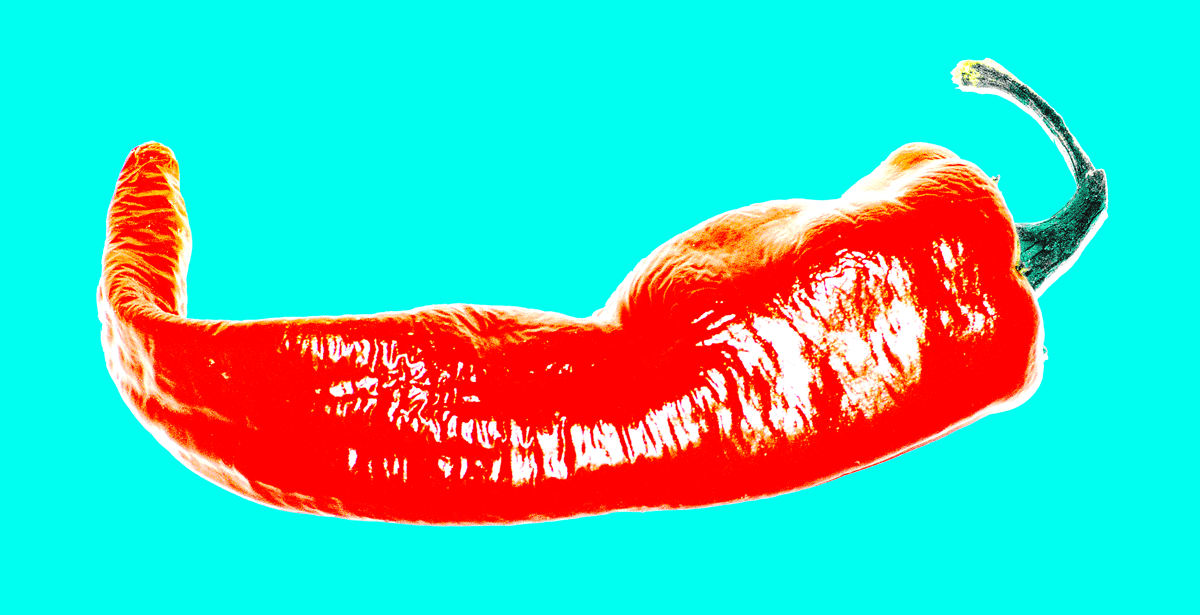
Scientists aren’t typically the most emotional bunch, so it gets awkward when David Popovich’s colleagues walk by and see him crying at his desk. Then, they notice his bottle of extra-hot hot sauce.
“I put it on everything,” says Popovich, who studies the bioactive compounds in plants and is a senior lecturer at Massey University in New Zealand. And so should you, because according to two top pepper experts, hot sauce is healthy.
That’s largely thanks to capsaicin—the active ingredient in peppers—which has shown antioxidant, anti-inflammatory and anticancer effects in lab studies. A paper published this summer looking at half a million Chinese adults found that those who who ate spicy foods three or more times a week had a 14% reduced risk of death, compared to those who didn’t eat much spicy food.
In his own lab experiments using cancer cells, when Popovich puts capsaicin on top, cell growth is reduced. Scientists don’t know the mechanism by which capsaicin appears to work in the body. But one prominent theory, says Popovich, is that it triggers something called apoptosis: a kind of cell “suicide” that encourages the turnover of cells—some with mutations—to be recycled into new cells. “That’s one of the ways scientists think capsaicin and other active compounds in vegetables can prevent cancer development: by stimulating apoptotic cell death,” Popovich says.
MORE: Why You Should Blame Millennials For Spicy Fast Food
The more fiery the pepper, the greater its capsaicin content. But that doesn’t mean the fieriest is the healthiest. Capsaicin hogs the credit for peppers’ healthy attributes but new science is showing that it’s actually the interaction of capsaicin with other compounds in peppers that makes it so good for you, says José de Jesús Ornelas-Paz, who is also a researcher of vegetable bioactive compounds and professor at the Research Center for Food and Development in Mexico.
“Pungent peppers are a cocktail of bioactive compounds,” he says, and capsaicin depends on them for its health benefits. “Blending, cutting and cooking improve the release of [these compounds] from pepper tissue, increasing the amount available for absorption,” Paz says, so you get the goods even when the pepper is pulverized and bottled.
It’s best, believe it or not, to eat it with a little fat. “Capsaicin is a fat-soluble molecule,” Popovich says. Pair it with oil, and the body can absorb more than if were paired with, say, raw vegetables.
Of course, read the label before you buy. Watch out for sweetened chili sauce, like sriracha, which contains added sugar, and make sure it doesn’t contain too much sodium. Popovich’s ideal hot sauce has red habanero peppers, vinegar, a little bit of salt and some garlic. Embrace the hot sauce rainbow, says Paz; each color has different delicious carotenoids.
“The bottom line is that any kind of vegetable material you consume will improve your health,” Popovich says. “But hot peppers are really beneficial for you, if you can take the spice.”
Read Next: Is Quinoa Worth The Health Hype?
More Must-Reads From TIME
- The 100 Most Influential People of 2024
- Coco Gauff Is Playing for Herself Now
- Scenes From Pro-Palestinian Encampments Across U.S. Universities
- 6 Compliments That Land Every Time
- If You're Dating Right Now , You're Brave: Column
- The AI That Could Heal a Divided Internet
- Fallout Is a Brilliant Model for the Future of Video Game Adaptations
- Want Weekly Recs on What to Watch, Read, and More? Sign Up for Worth Your Time
Write to Mandy Oaklander at mandy.oaklander@time.com